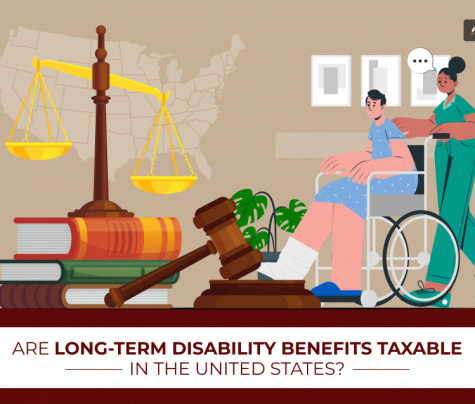
Pittsburgh, PA, is a great city for a multitude of reasons. From an exciting art scene to a mouthwatering range of cuisine to fun yearly events, the city has a lot of positive things going on for it.
But just like other cities, Pittsburgh has an accident problem.
Accident victims will have to understand different concepts in personal injury law to know their rights. One such concept is the reasonable person standard.
The reasonable person standard is an important concept in law. It is a benchmark of what a normal, average person would do in the same situation.
It determines whether a party’s action was negligent or reasonable. This standard is usable in a wide range of legal situations, such as tort law, criminal law, contract law, and property law, to mention but a few. Society and lawyers alike find this standard inevitable. The experts handling personal injury cases in Pittsburgh know this standard plays a key role in proving fault.
It sets an objective standard for responsible behavior in similar circumstances. If someone’s actions fall short, they may be liable for damages.
What Is the Reasonable Person Standard?
In practice, the reasonable person’s standard is a legal instrument that helps decide whether an individual’s action or choice was reasonable in relation to society’s expectations.
It posits that a reasonable person—that mythical entity of common sense, sound judgment, and average intelligence—would act in such situations.
The test is objective, i.e., it is not interested in the defendant’s personal character or opinion but in what society would consider reasonable behavior.
The test of reasonableness is most used to assess negligence. Which occurs when an individual does not exercise care to prevent causing harm to others.
It is important to identify whether the defendant would behave in precisely the same way as a “reasonable person” would have done in the very same circumstances. If the defendant’s behavior does not meet this, they may be considered negligent.
History of the Reasonable Person Test
The reasonable person test developed from English common law rules that initially provided disparate tests of whether a person was or was not negligent.
One of the earlier classic examples is the “ordinary care” test, which focuses on the notion that a person should be as careful and reasonable as possible.
The modern, reasonable person test evolved in the 19th century when English courts initially adopted a more formalized. Predictable approach to rejecting negligence claims.
That is when courts started applying a more objective test of conduct, enquiring what an ordinary person would do rather than the defendant himself.
The reasonable person test evolved even further in America in the 20th century, when it was included in the law of negligence.
It was a device utilized by the courts in an attempt to determine whether there was negligence or not.
The test of the reasonable person standard has evolved and is now a crucial doctrine in contemporary tort law and a standard general instrument to determine fault and liability.
Applying the Reasonable Person Standard
The reasonable standard person law is used in all areas of law. Though most frequently in cases of negligence, where it is used to decide if the defendant’s behavior was reasonable.
Judges and juries typically use this test to decide if a person’s behavior was reasonable and if they would be held legally liable for harm caused.
Negligence Cases
Personal injury law focuses more on whether or not a party was or was not doing what a reasonable party would have been doing.
The plaintiff has to demonstrate that the defendant’s action fell below that of the reasonable party and thus led to damage or injury.
For example, let us say that a driver hits another car after driving through a red light. The court will determine if a reasonable person would have respected the light. If the answer is yes, then the driver could be held for negligence. In slip-and-fall claims, businesses must maintain safe conditions to prevent injuries.
Elements of Negligence:
In personal injury cases, four basic elements must be proven:
– Duty of Care: The defendant had a duty of care towards the victim (e.g., a driver has a duty to other road users to drive carefully).
– Breach of Duty: The defendant had breached the duty by doing something that no one in their right senses would have done (e.g., running a red light).
– Causation: The breach of duty resulted in harm to the plaintiff.
– Damages: The plaintiff actually lost or suffered harm thereby.
Criminal Law
In other instances, the reasonable person test is applicable in criminal law to determine whether or not the defendant’s belief or conduct was reasonable.
In self-defense cases, it will consider whether or not a reasonable person in the defendant’s position would have thought that they were threatened and reacted in self-defense at the time.
For instance, in a case where a defendant has been charged with battery but insists he was acting in self-defense, the court will determine whether or not a reasonable person would have reasonably believed himself to be threatened with harm.
If yes, his actions could be excused. The same test applies to cases involving recklessness or negligence in injuring others.
Contract Law
Reasonableness in contract law is useful for identifying whether conditions for a contract are met and whether parties’ behavior has been reasonable in meeting their conditions.
For instance, if one of the parties to the contract is unable to supply goods on the stipulated date, a court can determine whether a reasonable person would be able to meet the contract deadline under those circumstances.
Main Features of the Reasonable Person Standard
Here are some features of the reasonable person standard.
1. Objective vs. Subjective Test:
The test is objective. It doesn’t consider the defendant’s subjective qualities, such as state of mind or intent.
Rather, it looks at what would have been done by a reasonable person in the circumstances. Subjective tests examine the individual’s specific qualities, i.e., experience or knowledge.
2. Cultural Norms:
The test presumes that reasonable people carry with them societal norms and standards generally existing in society at large. These are normally prevailing habits, consciousness, and canons in a jurisdiction.
Cultural or exceptional conditions in particular instances do render it somewhat difficult to apply. For instance, a cautious driver in the city would expect to drive his or her vehicle more carefully, given varying road conditions, than his or her counterpart in the rural area.
3. Flexibility:
The reasonableness standard is dynamic and flexible. It modifies itself as society’s expectations and customs change. Something reasonable some time ago may not be the same reasonable item today.
A good example is phoning up while driving, which was once reasonable but no longer so today. To a large degree, it is all about carelessness, with a higher incidence of accidents from phoned-up drivers.
Limitations and Criticisms of the Reasonable Person Standard
Notwithstanding its power, the reasonable person standard also has its limitations and criticisms:
1. Uncertainty and Lack of Exactness:
The critics contend that the appeal to what a “reasonable” person would do makes the standard so indefinite and imprecise that two judges or jurors might have different definitions of it and rule cases differently in the same circumstances.
2. Social and Cultural Bias:
The standard is grounded in a dominant Western conception of reasonableness. This could be inappropriate in situations involving cultural diversity of practice or disadvantaged groups. A court might unconsciously impose a majority-culture solution upon a minority.
3. Evolving Standards:
As society evolves, so must the reasonable person’s standard. How one applies the standard in deciding cases where society’s view of what is “reasonable” has shifted becomes a problem.
4. Insensitivity to Individual Differences:
The reasonable person standard refers to an idealized “average” person and ignores individual differences, such as handicaps, age, or health.
This may result in unwarranted conclusions, as a defendant’s behavior may be affected by personal handicaps.
The Role of Experts in Applying the Standard
In more complex cases, i.e., those involving medical negligence claims. Experts may be employed to decide what a reasonable person in that particular profession will do. As an illustration of this, take a case involving medical negligence. An expert will provide testimony for the standard level of care by a reasonable doctor to a comparable patient.
Final Words!
The reasonable person standard is a helpful analytical legal tool because it makes one’s actions relative to the standards and expectations of society as a whole and not relative to defendants’ individualized subjective judgments and biased opinions.
The standard assists the courts in determining whether a party was negligent or acted reasonably. It is applied across the entire spectrum of law, from tort law to criminal law to contract law.
The standard has changed over the years and has been helpful in making judgments legal so that they are fair and unbiased. But it is not perfect.
Read Also:
- 10 Situations Demanding a Lawyer: When to Seek Legal Counsel
- Understanding the Difference Between a Tort and Personal Injury
- The Ultimate Personal Injury Dos and Don’ts Guide: What You Need to Know










0 Reply
No comments yet.